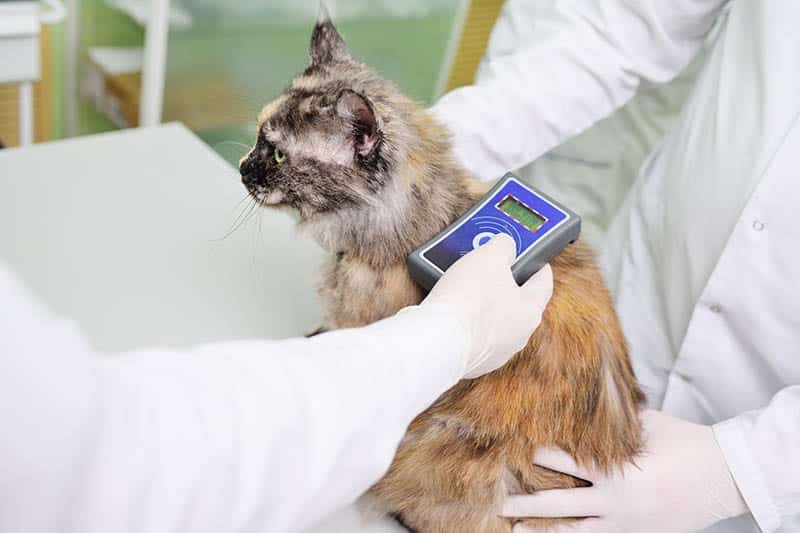Not being able to find your cat can be a scary experience, and it’s easy to go into panic mode, but keeping a calm, cool head is essential when creating an effective plan to find your cat. The first step is to search your house again, systematically going from room to room and checking places like closets, under beds, in attics, and even kitchen and bathroom cabinets.
Cats are good at hiding, so be sure to search the house well. The sound of a can being opened or the whiff of tuna can sometimes bring cats out of hiding. If that doesn’t work, continue searching the outside of your home and be sure to look in places like under porches and in sheds. Outdoor cats rarely stray far from home, so extend your search to include nearby areas where they are likely to hide; cats are often found hiding in neighbors’ yards.


Tips for Finding a Cat
When it comes to finding lost cats, time is of the essence. Starting the search right away is one of the best ways to improve the chances of finding your friend. Remember that most indoor cats don’t make it very far once they make a run for it.
Cats generally only travel about 1/3 of a mile from home on these escapes, so it’s often worth focusing your initial search on the area closest to your home. Keep reading for some tips to help you organize your search.
1. Prepare a Toolkit
Before you head out to start looking for your cat, grab a few essentials. Make sure your phone is charged and you have a towel wrapped around your cat, and if it’s dark outside, take a flashlight and consider wearing something reflective so drivers can see you.
Also, grab some treats and a can of your cat’s favorite wet food. Cats sometimes reveal their whereabouts quite quickly when the right incentives are offered.

2. Knock on the Door
Cats can often be found hanging out in neighbors’ yards and even homes, so consider knocking on your neighbors’ doors and asking if they’ve seen your cat. If you feel comfortable, consider asking if you can check out their backyard to see if your cat is hiding anywhere. Leave your contact information and ask them to get in touch if they see your companion hanging out in or around their home.
3. Contact Shelters and Veterinarians
Sometimes lost cats are taken to shelters or local veterinarians’ offices, so consider contacting them to see if they have any information about a lost cat that matches your companion’s description. Send a picture of your cat and information about when they went missing to make it easy for them to identify your cat if someone takes them in. Don’t forget to provide your contact information.

4. Search at Different Times
Cats sometimes run away and then get a little scared, and they often hide until things quiet down and there are fewer people and cars around. Evenings and early mornings are often good times to look for lost cats because there is often less activity outside that can scare cats and prevent them from hiding.
5. Keep Searching
Cats that are not used to being outside alone may become fearful, hide out of fear, and be too afraid to respond when you call. Some come out once they’ve had time to calm down and work up the courage to act, so be sure to keep walking around and calling your cat’s name for a few days after going missing. R
Remember that about 60% of lost cats are eventually rehomed, and about one-third are rehomed within 7 days of being lost.
6. Update Your Contact Information Using the Microchip Registry

If you registered your cat’s microchip with the manufacturer’s registry, call them or go online and make sure they have your correct contact information and that you know your cat is missing.
If your cat is microchipped and you have not yet completed the registration process, contact your veterinarian to find the chip number and register it in the proper database as soon as possible.
7. Get the Word Out
Letting as many people as possible know about your cat can increase their chances of being rehomed. Posters featuring a picture of your cat and ways to interact with you are great ways to get the word out. There are also social media groups dedicated to posting information about lost pets and providing assistance in finding them.
8. Follow up
After contacting your neighbors and local shelter, follow up regularly to make sure your cat is still on the radar. Consider going to local shelters just to make sure your cat is gone, as microchips aren’t foolproof, and shelters are often so busy that it can be difficult to keep an eye on specific pets.


Frequently Asked Questions
Are There Ways To Increase The Chances Of Getting Cats Back If They Get Lost?
Yes. Microchipping is a good place to start, but the chip must be properly registered in the correct database to work, and there’s always the chance that something can go wrong with a microchip reader. Having cats wear a collar that features an ID tag that lets people know how to contact the owners if they are found can make it easier for people to contact you if they find your cat. .
Are There Other Ways to Find Pets?
Yes. If your cat remains missing for more than a day or two, you might consider switching to methods like setting up a motion-activated camera in places you think your cat might be hiding. . Some pet microchip registries also offer assistance in finding lost pets, and there are also pet detectives who can provide assistance.

Do Veterinarians Need to See Cats After They Go Home?
It depends on their condition and how long they have been gone. Healthy adult cats that have only been outside for a few hours and do not appear to have any injuries or wounds are likely to be fine.
Long-lost cats benefit from a quick checkup to make sure everything is fine and to address any injuries or other issues. Your vet can give you an idea of whether your cat needs to be seen or if it’s okay for you to just keep an eye on them.

Conclusion
The first thing to do if you can’t find your cat at home is to take a deep breath and relax. You can search your home again, paying attention to places like closets, under beds, and in basements and attics. If you still can’t find your cat, move the search outside, and remember that most cats don’t get very far on these escapes, so target an area close to your home.
Let your neighbors know you’re looking for your cat, and consider asking for help via social media. Share photos of your pet far and wide, and contact local shelters and vets to let them know your kitty is missing if you can’t find them near home.
Featured Image Credit: H_Ko, Shutterstock


